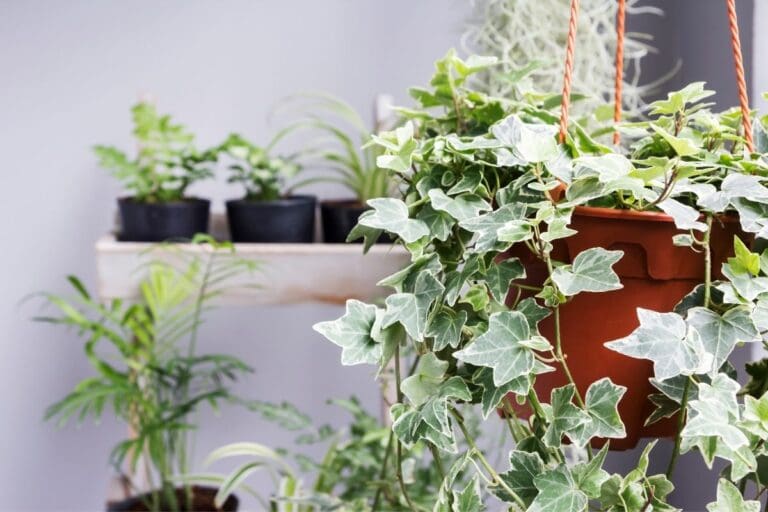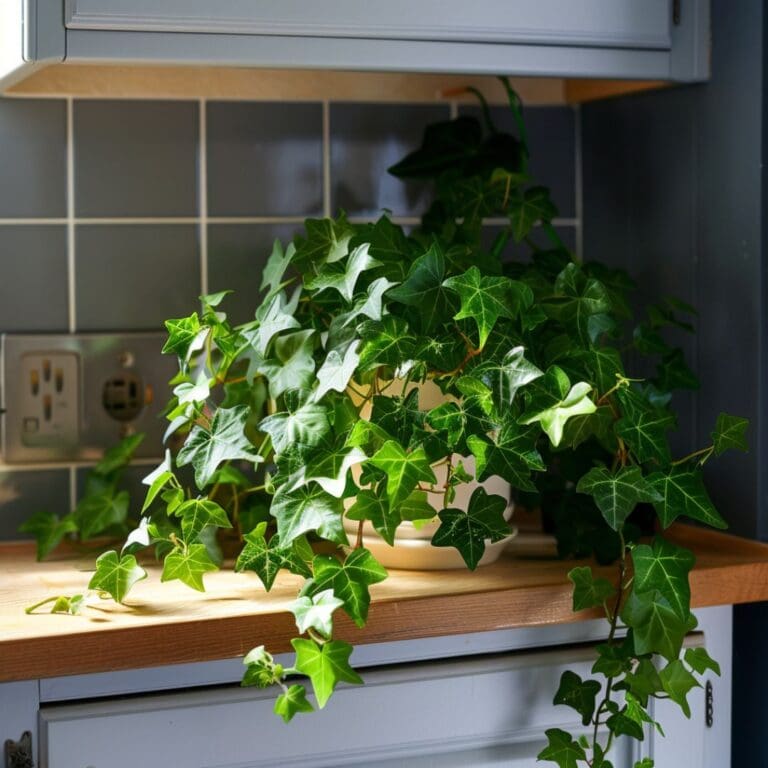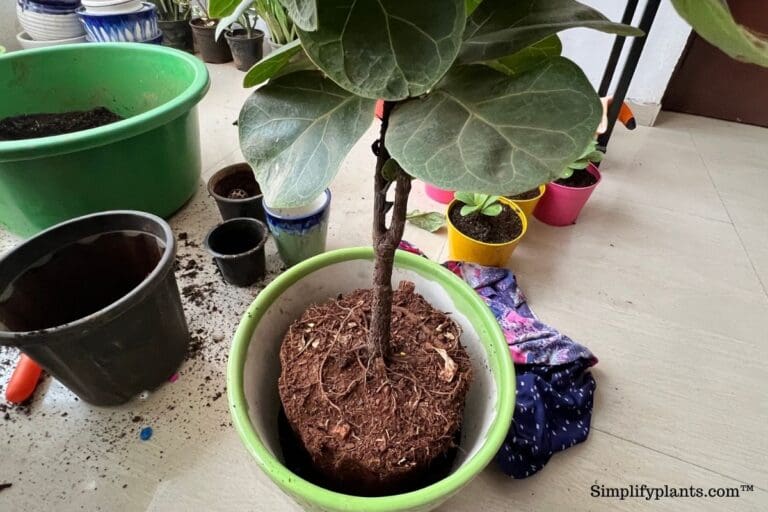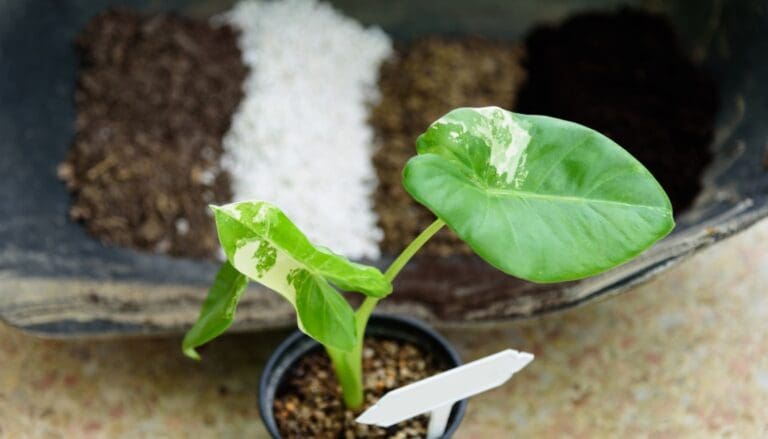Is Calathea Plant Toxic (Cats, Dogs & Other Animals)
Calathea is a beautiful tropical plant that is not beginner-friendly due to its fussy nature. But you can make it thrive once you understand its requirements.
But even if it adds to the beauty of your home, a common thought that remains in everyone’s mind is, are calathea plants toxic to pets?
According to ASPCA, all varieties of Calatheas are non-toxic, which means it is neither toxic to pets nor human. All pets, including cats, dogs, rabbits, and birds, are safe around the calathea plant. But some pets might bite the leaves of calathea, making them look unaesthetic.
In this article, we will list some other non-toxic plants and how to care for your Calathea, so you don’t end up killing it.

Please note: Simplify Plants is reader-supported. Some links in the post are affiliate links and I get a commission from purchases made through links in the post.
Is Calathea poisonous to humans?
Unlike many other houseplants that are termed toxic to humans, Calathea is a non-toxic one that is safe for children and humans.
Therefore, you must not worry about keeping your Calathea out of the reach of children in your house.
However, if your children tend to hurt your Calathea by pulling the leaves or shaking the plant, your Calathea might get shocked and damaged.
In such cases, keep the plant away from your children.
Here are some ways of keeping Calathea away from your children.
- Use a shelf that is out of the reach of your children and place your Calathea there.
- Move your Calathea to a room where your children don’t go.
- Use a chicken wire to cover the pot as children and babies tend to put their hands in the soil.
Is Calathea toxic to cats?
According to ASPCA, Calathea is not toxic to cats. So, if you have cats in the house, worry not. You can have both the cat and the Calathea in the house.
However, keep an eye on your cat and make sure it is not harming the plant in any way, or else you’ll have to take steps to keep the plant away from the cat.
Is Calathea toxic to dogs?

Calathea is non-toxic to dogs. This makes Calathea a great plant to have in the house without being a threat to your dog.
If your dog tends to consume the leaves of Calathea that can shock the plant, you can train the dog not to go near your Calathea or keep it on a shelf where your dog will not be able to reach.
What are some other non-toxic plants?
Here are some other plants that are safe for humans and pets.
- African violets
- Peperomia
- Spider plants
- Fittonia
- Parlor Palm
- Haworthia
- Basil
- Cast-Iron plant
Which plants are toxic?
Now, let’s look at some plants that are toxic for children and your pets.
- Philodendron
- Pothos
- Peace Lily
- Ivy
- Caladium
- Snake plant
- Dieffenbachia
- Arrowhead
- ZZ plant
- Jade plant
If you have any of these in the house, you should make sure these are placed in spots that your children or pets will not access.
How to keep pets away from toxic plants?

Let’s look at a few ways to keep your pets away from the toxic houseplants you have in the house.
Keep the plants away
The easiest way is to keep the plants away from your pets. Find places that are not accessible for your pets.
You can use high shelves, hanging baskets, or a room where your pets cannot enter. However, cats can often reach high places by jumping from one surface to another.
So, you might want to move the plant outside but make sure that the conditions are suitable for the plant.
Use coffee grounds
Coffee grounds have a strong odor that most pets cannot tolerate, so if you can use coffee grounds to keep the pets away.
However, don’t put coffee grounds directly on the soil. You can make a liquid fertilizer and then pour that into the soil.
Or add coffee grounds to the compost and then add it to the soil of the plant.
Also read: Do Calathea Like Coffee Grounds? (+How To Use It Correctly)
Use blood meal
You can use blood meal to keep the pets away from the toxic plants. The best thing about a blood meal is that it contains a lot of Nitrogen that your pets will not like.
You can mix some blood meal with the soil of the plant. Read the instructions thoroughly so you don’t use too much blood meal that can harm the plant.
Use repellents
Many sprays are available that will help you repel the pets from the toxic houseplants.
You can opt for Marigold or Citronella sprays and apply them to the toxic houseplants. The smell will keep the pets away.
Train the pet
You can train dogs better than cats, but you can teach your pets to stay away from toxic houseplants.
Start by giving your pet treats whenever it stays away from the plants. Do this till it becomes a habit, and your pet finally learns to stay away.
If you fail to train your cat, you can put stones around the plant. Cats don’t enjoy walking on unsmooth surfaces, so this will keep them away.
How to care for the Calathea?

If you are growing or plan on growing Calathea in the house, take a look at these essential points to help you take better care of your Calathea.
Light
Calathea requires bright and indirect sunlight to thrive. However, Calathea can also survive in low light conditions, but you can’t expect proper growth.
And you must keep this plant away from direct sunlight at all costs. In its natural habitat, Calathea is used to dappled sunlight. The large trees keep it protected from direct sunlight.
Calathea requires only filtered light as direct sunlight can scorch the leaves and make the plant dehydrated.
Also read: How Much Light Do Calathea Plants Need? (Calathea Plant Light Requirements)
Water
Watering the Calathea correctly might require some experience as this plant neither likes drought conditions nor soggy soil. So, finding the balance and knowing when to water is the key to its health.
Calathea prefers moist soil all the time. So, you must water the plant when the topsoil dries so that the plant doesn’t face dry conditions.
Also, don’t water without checking the soil as that can cause overwatering, another situation that your Calathea dislikes.
Also read: How Often To Water Calathea? (A Complete Calathea Watering Guide)
Soil
Since Calathea neither needs excess water nor bone dry soil, you must prepare the soil mix accordingly.
The ideal soil for Calathea will support drainage and just enough retention. So, include a balance of elements that retain and drain water.
Here is a soil recipe that you can use for your Calathea. Add:
- 1 part organic soil
- 1 part coco peat
- 1 part perlite
- A handful of compost/worm casting
You can prepare this soil mix and add it to the pot while planting or repotting your Calathea.
Also read: What Kind Of Soil Is Best For Calathea? (Best Soil Mix For Calathea)
Fertilizer
Calathea doesn’t require a lot of fertilizer. It can do well with a little. Consider fertilizing your Calathea during the growing seasons, which are summer and spring.
You can fertilize your Calathea with a 10:10:10 fertilizer that has all the nutrients in balance. You can dilute the dose to make it half-strength to avoid overfertilizing your Calathea.
Stop fertilizing your Calathea entirely in winter, as that is the dormant period when the plant rests and doesn’t need any fertilizer.
During the growing season, consider fertilizing the Calathea once a month. You can also fertilize twice a month but make sure that the plant reacts well to it.
Also read: Should I Fertilize Calathea? (How Often+Best Fertilizer)
Repotting

Calathea is sensitive to repotting, and if you do it too often, this can become the reason behind the death of your Calathea.
You should repot your Calathea only when it gets rootbound, which is if the plant outgrows the pot. You can also repot your Calathea in case of root rot or any other disease.
Consider repotting during the spring season as this is when the conditions are most favorable for the plant, and this will help the plant recover from the stress of repotting faster.
Also read: When To Repot Calathea? (+Step-By-Step Guide)
Pruning
Pruning should be an essential part of the care routine of your Calathea. You must prune all the damaged or diseased parts that you notice on your Calathea.
If your Calathea is not well, get rid of all the yellow, brown, or distorted leaves as these will not get healthy again.
Always prune with sharp and sterilized pruners to avoid infections and diseases and make clean cuts on the plant.
Propagation
If you want to grow more Calathea plants, you can propagate the one you have and get more plants out of it.
You can divide your Calathea and repot the divided part in a new pot with fresh potting mix and let the plant grow.
Make sure you provide all the ideal conditions that will help the divided plants grow further.
Also read: How To Propagate Calathea? (Best Time+Steps To Follow)
Final words
Calathea makes a beautiful houseplant that is worth the attention it demands. Since Calathea is non-toxic to pets and children, it gives you another reason to grow Calathea in the house.
Calathea is non-toxic to children and adults. It is also non-toxic to dogs, cats, horses, and rabbits. Provide your Calathea with sufficient indirect sunlight, keep the soil moist, and fertilize it during the growing season to keep it healthy and happy.
I have mentioned plants that are non-toxic and toxic in this article. I have also included ways with which you can keep pets and children away from toxic plants. This should help you deal with both toxic plants and non-toxic plants such as Calathea.
Also read: How To Save A Dying Calathea Plant? (Possible Problem+Solution)
Also read: Houseplants and Ornamentals, Pet poison online, Toxic plants, and companion animals.
Recommended Garden Supplies
| Product Image | Our Recommended Gardening Supplies | Check Offers! |
|---|---|---|
Top Top
Top
Top
Top
Top
Top
Top
Top | rePotme Houseplant and Tropical Classic Potting Soil Mix | Check Offer On Amazon |
 Top
Top
Top
Top
Top
Top
Top
Top | Espoma Organic Indoor Plant Food | Check Offer On Amazon |
 Top
Top
Top
Top
Top
Top
Top
Top | GooingTop LED Grow Light 6000K Full Spectrum Clip Plant Growing Lamp | Check Offer On Amazon |
 Top
Top
Top
Top
Top
Top
Top
Top | Soil Moisture Meter | Check Offer On Amazon |
 Top
Top
Top
Top
Top
Top
Top
Top | Govee Hygrometer Thermometer, Bluetooth Enabled! | Check Offer On Amazon |
 Top
Top | LEVOIT Humidifiers for Large Room(Best For Plants) | Check Offer On Amazon |
 Top
Top
Top
Top
Top
Top
Top
Top | Upgraded DIY Automatic Drip Irrigation Kit, 15 Potted Houseplants Support | Check Offer On Amazon |
 Top
Top
Top
Top
Top
Top
Top
Top | Stainless Steel Heavy Duty Gardening Tool Set | Check Offer On Amazon |
 Top
Top
Top
Top
Top
Top
Top
Top | Bonide Insecticidal Soap | Check Offer On Amazon |
 Top
Top
Top
Top
Top
Top
Top
Top | Bonide 32 oz Spray Neem Oil for Organic Gardening | Check Offer On Amazon |
 Top
Top
Top
Top
Top
Top
Top
Top | Garden Safe Fungicide | Check Offer On Amazon |






